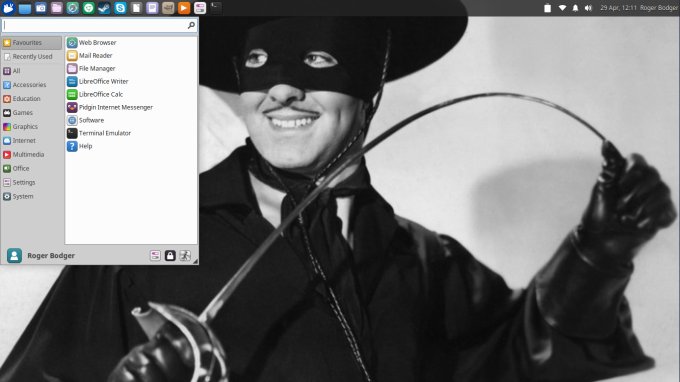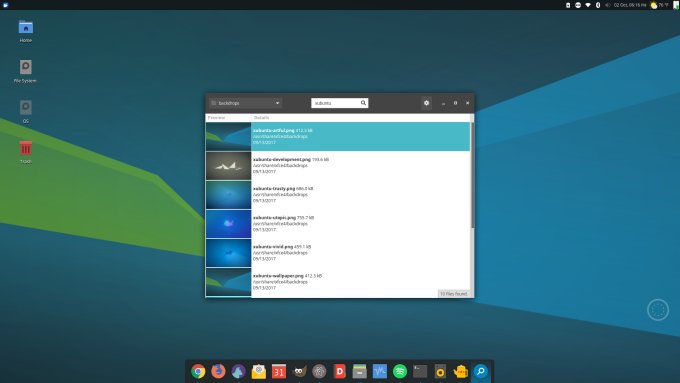Updated: October 13, 2017
Interviews. The bread and butter of people talking and some recording the stuff. But it's also a great opportunity to learn more about interesting people, unique projects and fun stuff. While the Linux world has not be the most engaging rollercoaster lately, Xfce does stand out as a stable, fairly mature and fairly consistent piece of technology in the wider Tuxospace.
So, I'm happy to announce an interview with a member of both the Xfce and Xubuntu teams, who will tell us more about what these guys and gals are all about, what goes behind the scenes of one of the most important and steadfast desktop environments, and what we should expect from Xfce in the coming years.

Can you please introduce yourself.
Hi, I'm Sean! I'm an Xfce core developer, Xubuntu Technical Lead, and long-time Linux user. I love solving problems ... and maintaining a desktop environment means there's no shortage of those.

Here be Sean.
If you had to describe Xfce to a Windows user, how would you do that?
S: Do you like the way Windows works? Xfce can be configured like this. Do you have Mac OS envy? Xfce can be configured like this as well. Is there anything you've ever wanted to change with Windows? With Xfce, you can customize nearly every aspect of the experience. And it's going to be way faster too.
What makes Xfce special?
S: Xfce is a lightweight and modular desktop environment. While not as light as some other offerings (say, LXDE), it is incredibly customizable and maintains a professional design. The development cycle is slower than other DEs, but this means that every component is very stable and won't rattle longtime users.
Why should I choose Xfce over, say, Plasma or Gnome?
S: For starters, Xfce is going to run and look good on any machine you put it on. The compositor is optional, so you don't need a recent or powerful graphics card to enjoy the full experience.
Xfce is a community project. None of our developers are getting paid to work on Xfce (at least not directly), so we have no corporate interests driving our development.
The development team has a varied background: designers, QA, sysadmins, and everyday users. We use Xfce in personal and professional capacities and strive to make sure it's a good fit for any need.
If you had unlimited budget to develop or enhance Xfce, what would you do?
S: Hire some development, design, and bug triage talent to knock out some long-standing issues and freshen up the ecosystem. We have some really high quality software, but it's marred by some long-standing issues and design inconsistencies. Our small team consists of a number of talented folks, but working for free usually means that Xfce takes a back seat to life, and the list of TODOs and FIXMEs seems to keep growing.

Kubuntu 17.04 Zesty ... um ... Zapata, as seen in Dedoimedo's testing.
I know Xfce isn't a single entity. You guys cooperate with other projects, including Xubuntu, Shimmer, and others. Can you tell us more about how you coordinate your work? Can you tell us more about the team(s)?
S: I'm pretty familiar with the relationship between Xfce, Xubuntu, and the Shimmer Project, but don't know about other teams that are also closely related to the project. Xubuntu uses Xfce and numerous components for the desktop experience and the Xubuntu QA team readily tests new features and releases. As for Shimmer Project, Greybird is developed as an Xfce-first theme, and is used as the benchmark to base other compatible themes. Simon Steinbeiss (ochosi) is an Xfce core developer and main contributor to Greybird and other themes. Pasi Lallinaho (knome) is co-founder of the Shimmer Project, longtime contributor to the themes, and a web design guru. You can thank knome for the recent Xfce Bugzilla refresh.
What's a day in life in Sean's life?
S: Wake up too early, read the news and eat breakfast. Head out the door for 8 hours of paid web development. Come home, eat dinner and work on Xfce and Xubuntu. On lazy days, I'll watch anime and play video games until it's time to sleep.
Is Linux ready for prime time?
S: Of course. It powers servers, desktops, laptops, smartphones, and embedded devices all over the world. It's been ready for prime time for quite some time.
What do you think the Linux desktop, as a whole, should focus on doing next? What's THE problem we need to solve?
S: I think there's a marketing problem ... We (as users and contributors) need to get better at explaining why Linux is valuable, and why it matters for everyone, whether they use it directly or indirectly (it powers the world!).
What's your favorite distro?
S: Xubuntu, I'm biased. Prior to Xubuntu, I would have pushed folks toward OpenSUSE or PCLinuxOS.

Screenshot of Sean's desktop.
Who's your favorite 80s action movie star? Is it Michael Dudikoff or Dolf Lundgren? Do you have a He-man T-shirt? And why not?
S: I'm a terrible, uncultured child born at the tail end of the 80s. I don't know either of those actors. I did enjoy the Indiana Jones movies from the 80s, so Harrison Ford will be my pick. I don't have anything He-man related, but I did play with my Uncle's collection.
DM: Just to make it clear, Harrison Ford is most likely not Sean's uncle.
What should we expect from Xfce in the coming year?
S: Cross your fingers and maybe we'll see Xfce 4.14. Other than that, bug fixes, more GTK+ 3 ports, maybe some infrastructure changes.
And in 2025?
S: Hopefully not Xfce 4.14.
DM: That's was witty. I like.
Do you guys cooperate with other DE teams?
S: Olivier Fourdan, creator of the Xfce desktop and maintainer of the Xfwm window manager works for Red Hat and contributes to the development of Wayland, GTK+, Mutter, and GNOME Control Center. Simon (ochosi) maintains the elementary-xfce icon theme, where we inherit, adapt and finally contribute to elementary's icon theme. Xfce depends on GTK+, so we submit bug reports (and the occasional patch) when things are not working as expected or documented.
Finally, with the relationship to Xubuntu, we've worked on a lot of cross-DE topics and projects as a part of the Ubuntu family of flavors (indicators, GTK+, etc). The same can be said for the teams working on Debian, the Fedora Xfce spin, and other places you find Xfce. It's a tight community of inter-connected open source software.
Who's your nemesis? Not on a personal level, more sort of dev style?
S: I don't have one in particular, but anybody using tabs instead of (4) spaces is eligible to be on the list.
DM: What about three spaces?
What can the Linux community do together to make Linux, well, better?
S: Stop reinventing the wheel for the sake of being different. Review and accept patches, or offer suggestions to improve the patches. Check out new releases of different desktop environments, or even Windows and Mac OS to see if there's new innovations you haven't considered before. Finally, improved upstream and downstream cooperation would lead to a better experience for developers, maintainers, and users.
DM: I agree wholeheartedly on the sake/difference/wheel thing. Right on.
Best Xfce hack that few people know about?
S: Three panels on the top (left-aligned, center-aligned, and right-aligned) can give you a centered clock, if you're into that kind of thing.
DM: That is indeed wicked.
Anything else?
S: There's no best desktop environment, but if there was, it'd be Xfce.
Captain's log, supplemental
A few small extras. You might want to check Sean's personal website or his twitter. Also, if you want to support Xfce other than pure development and bug reports, then please consider visiting the Xfce Bountysource page. Last but not the least, there's a plenty of Xubuntu related articles and review on Dedoimedo so feel free to explore those.
I hope you enjoyed this and thanks for reading.
Cheers.